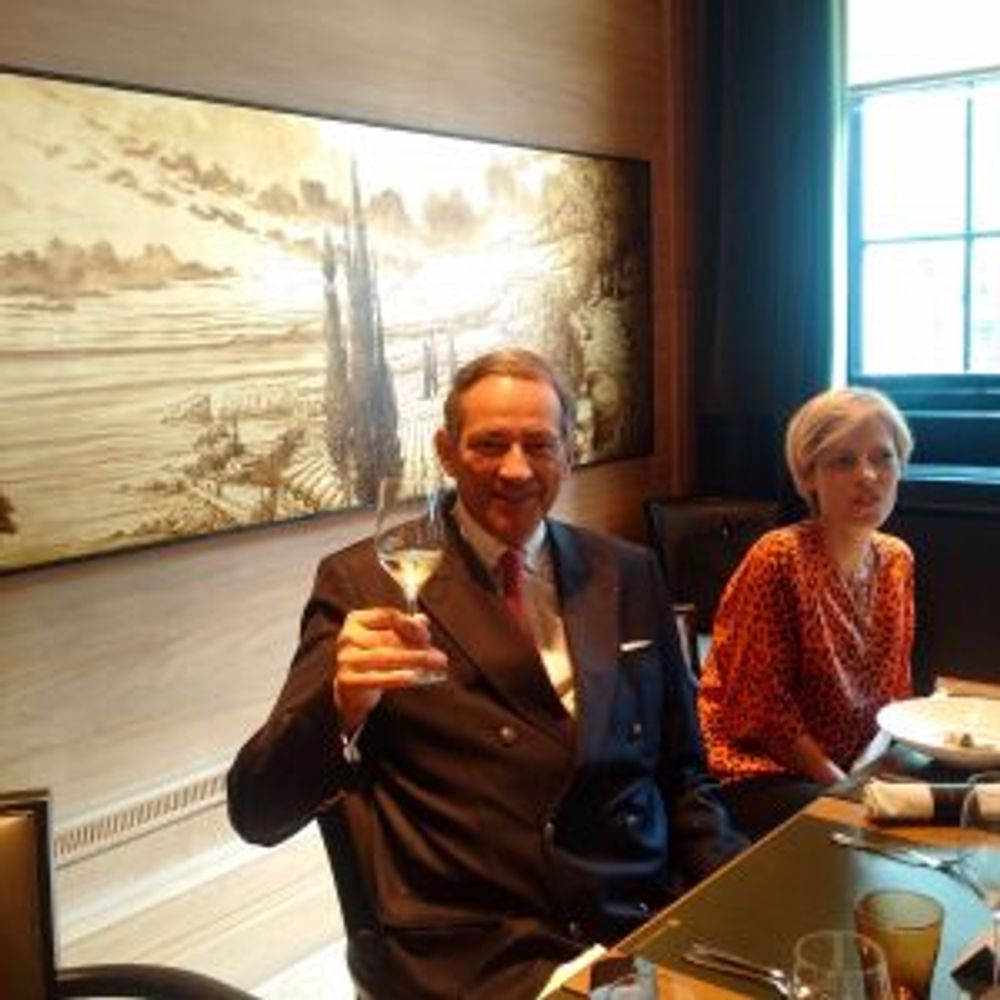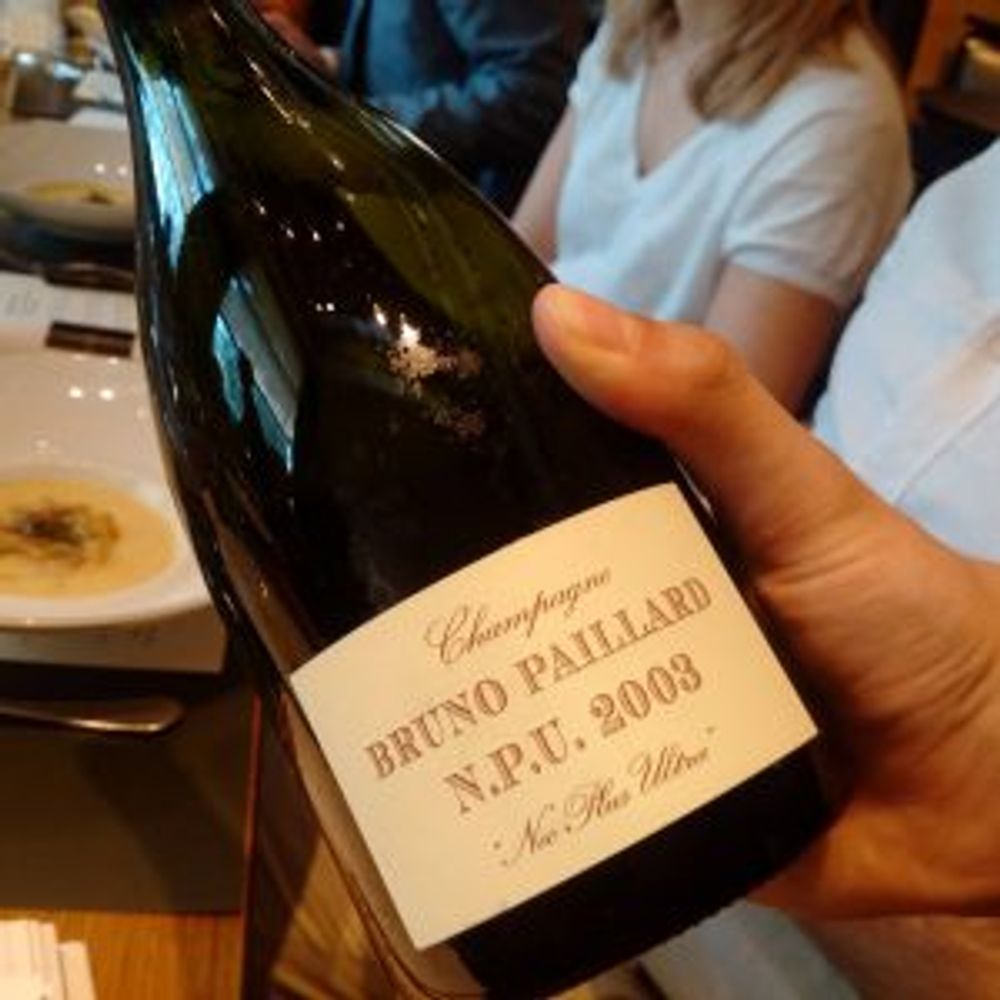A lunch, a challenge and seven key points about making a prestige cuvée.

Bruno Paillard raises a glass
Making a prestige cuvée never really was Bruno Paillard’s aim. He, as a veritable newcomer in Champagne with his own house founded as recently as 1981, initially set out to create multi-vintage blends that would truly reflect the straight-laced, northerly purity of Champagne.
The idea, or rather the challenge, of making a prestige cuvée was born at lunch with British journalists in the late 1980s who chided Bruno for ‘only’ making multi-vintage blends.
Discussing this idea they conjectured what the underlying principles of an ideal prestige cuvée would be. They came up with seven key points:
- It should only be made in great vintages
- The grapes should only come from Grand Cru vineyards
- Only the first pressing should be used (the first 50cl of each kg of grapes)
- The base wine should be 100% barrel-fermented and matured for between 9-10 months
- The bottles should spend 10 years on the lees
- It should have an extra brut dosage
- It should be allowed to ‘convalesce’ for at least one year after disgorgement
Thus the idea was born and so was the name: if you heeded all of these points all the time, there was no way you could go beyond, add anything further, to make a better Champagne.
“It’s not pretentious,” Bruno says, “it is ambitious. It is a statement as much as a brand name.”
Many of these points were a reaction to the Champagne market at the time. ‘Brut’ in those days could mean as much as 15g/l of dosage released after the legal minimum ageing, Bruno explains.
Doing justice to a guiding principle

Bruno’s daughter, Alice, on the idea behind naming Champagnes
Bruno’s daughter Alice who has worked in the vineyards, the cellar and in exports, is now working alongside her father to slowly take over the company which Bruno lovingly refers to as ‘Maison BP’: “The name on the label does not only stand for the founder but also the owner and the nose who makes the wine,” he says and is justly proud of the family-owned house which has an annual production of about 400,000 bottles and owns 32ha of vineyards.
Alice also comments: “The idea behind the name is not to say it is the best, it is about all the decisions taken during the making of the Champagne and starts in the vineyard: we go as far as we can. The name is a sort of guiding principle.”
The 2003 Vintage in Champagne
Many will raise eyebrows over a prestige cuvée from the heatwave year of 2003. It was also marked by severe spring frosts that really impacted Chardonnay yields, explains Bruno.
Such low yields combined with the heat resulted in “almost cooked fruit” for many, however, when selected from the right vineyards “2003 was so rich and concentrated that it would have been wrong not to create a vintage,” attests Bruno.
Alice adds that this 2003 N.P.U. taught her a great lesson: “Not only can you make a vintage on the basis of your observations throughout the vintage but also based on what you taste in the glass.”

The 2003 N.P.U. is based on 50% Chardonnay from Oger and Avize and on 50% Pinot Noir from Mailly and Verzenay (usually N.P.U. also contains fruit from Bouzy and Mesnil but those were too ripe in 2003). The dosage is a mere 3 g/l. All the vineyards are farmed organically and since there is a very low sulphur-regime, Bruno reckons that about two thirds of the base wine went through malo-lactic fermentation.
So what does the Bruno Paillard N.P.U. 2003 taste like?
The nose is immediately rich and has an initial hit of cream that even comes with the slightest whiff of toffee.
The palate, on the other hand, is much more taut at first and shows rich glimpses of lemon oil here and there. With a little more time in glass it opens up to a lovely expanse of autolysis, drawing you to its deep, chalky core but never losing its Amalfi lemon zestiness, despite its fine, creamy mousse.
Tasted with food, the palate even gains a touch of clear blossom honey. It truly is a 2003 in the precise style of the house and still very young. This is made to last and evolve.
And lastly…
Bruno reveals that he has also made and already disgorged a 2002 N.P.U. which is still resting after its disgorgement. He hopes to release it sometime in mid-2017. Something to look forward to.































